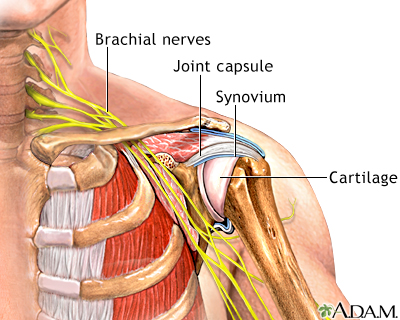ITW- Dislocated shoulder leads to object strike
The shoulder joint is a ball-and-socket joint and is the most freely moving joint of the body.
The shoulder joint can move in multiple directions therefore it is less stable than other joints and is more susceptible to injury.
Dislocation of the shoulder joint is common and occurs when the top part of arm bone slips out of its socket.
The first shoulder dislocation usually is the result of:
1 poor warm-up (few push-ups)
2 not stretching prior to physical activity
3 weak shoulder muscles (rotator cuff muscles)
4 hand in throw away position
5 high external forces applied

There are four muscle tendons that connect to the shoulder that make up the rotator cuff.
Together these four tendons stabilize the upper arm bone to the shoulder socket and allow the wide range of motion in the shoulder.


The first dislocation stretches out the rotator cuff tendons and the
joint capsule.
After the shoulder is repositioned it takes about 2 weeks for them to tighten up during wich the arm should be at rest if not immobilized.
The problem is that the pain is eliminated almost as soon as the shoulder is repositioned and the patient
rarely if ever complies with the 2 weeks period.
Tricked by feeling no pain he never lets the joint capsule to heal and get tight again.
And this is the major cause of consequent dislocations!
So to summarize. In order to avoid your: A. first dislocation
1 strengthen your shoulder muscles
2 stretch prior to physical activity
3 warm-up
4 don't make weird arm movements
B. consequent dislocations
1 wait (
be patient!) for two weeks

2 then read A.
Now if someone was unlucky (or stupid) enough to already have multiple shoulder dislocations he should consider surgery as the last resort for tightening his ligaments (joint capsule).
The classical approach is the
Buford arthroscopic method where you stitch the joint capsule with it self in the middle (effectively tightening it)
http://www.youtube.com/watch?v=_mavZS6cy-U Alternatively there is the thermal shrinking method:
(faster, but not as strong as the Buford)

After surgery: read A.
Good luck! Heal well!
 , I never really though about something like that happening.
, I never really though about something like that happening. 




